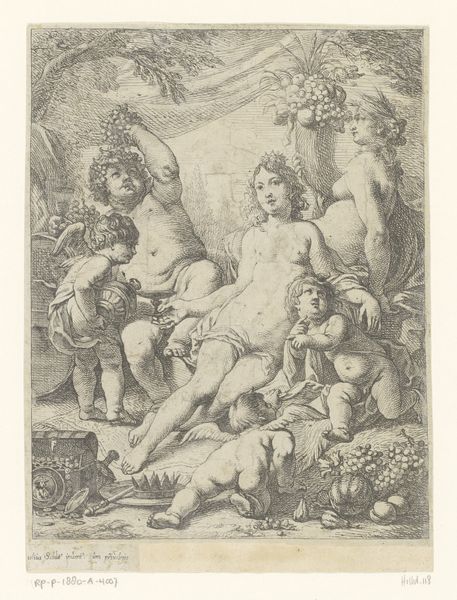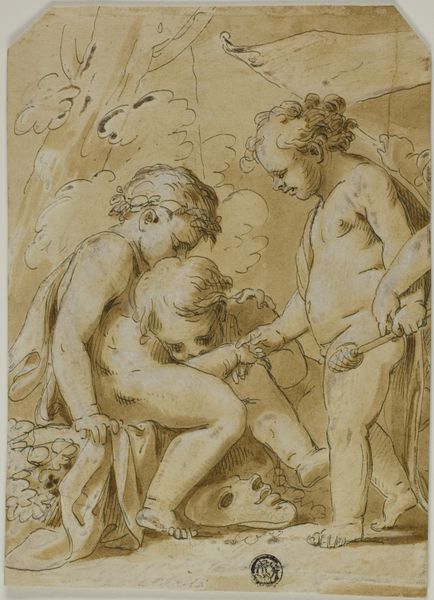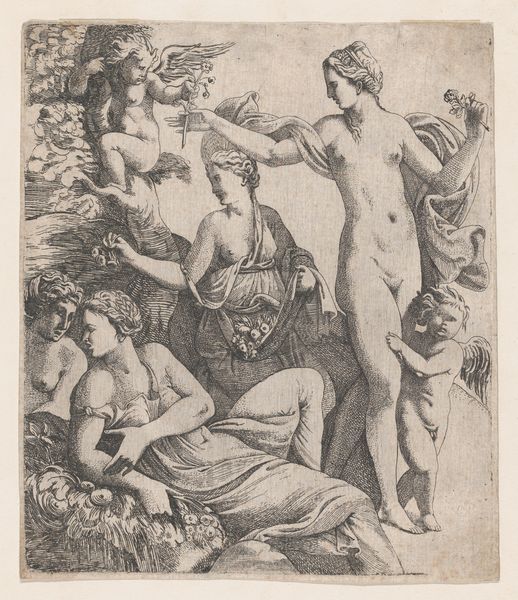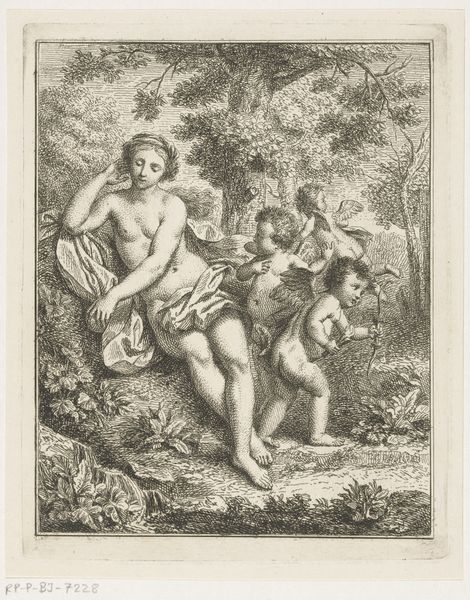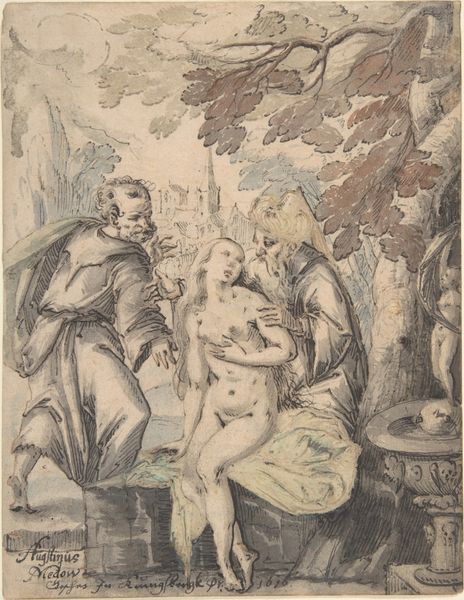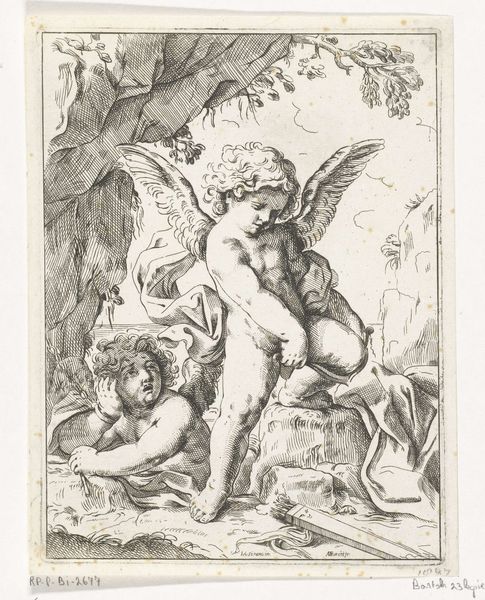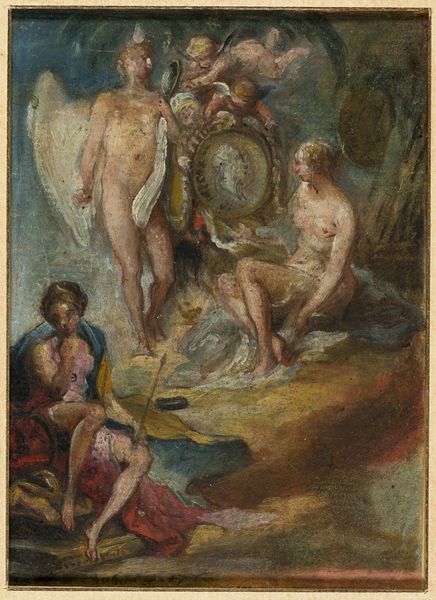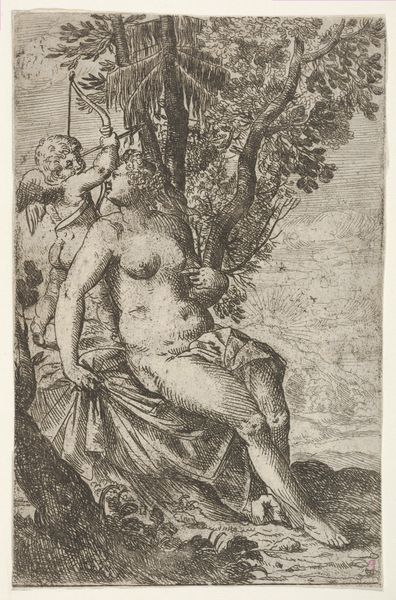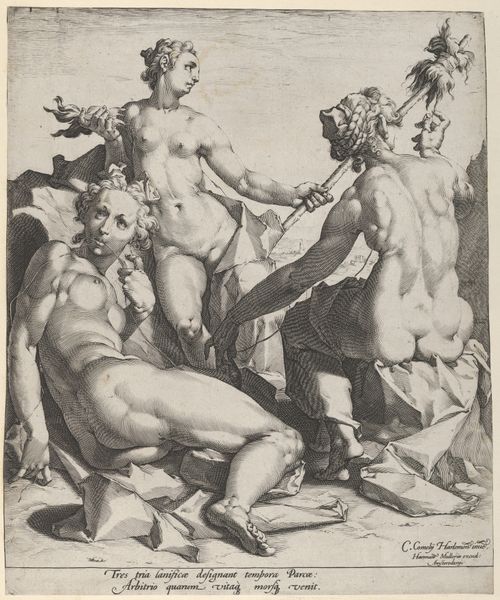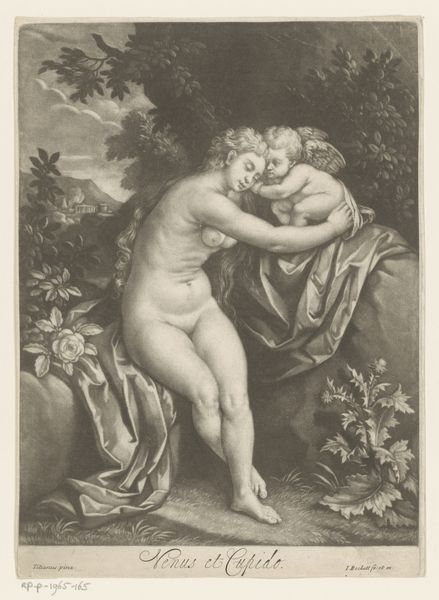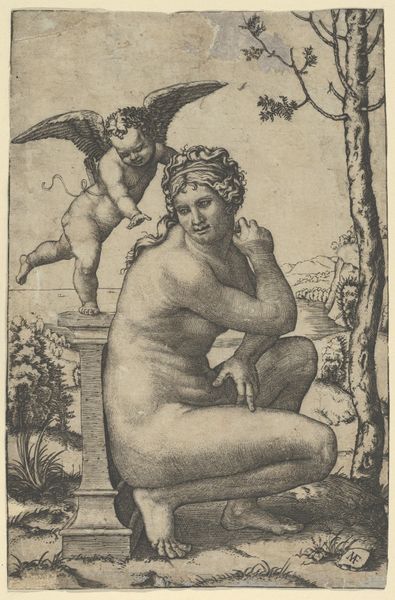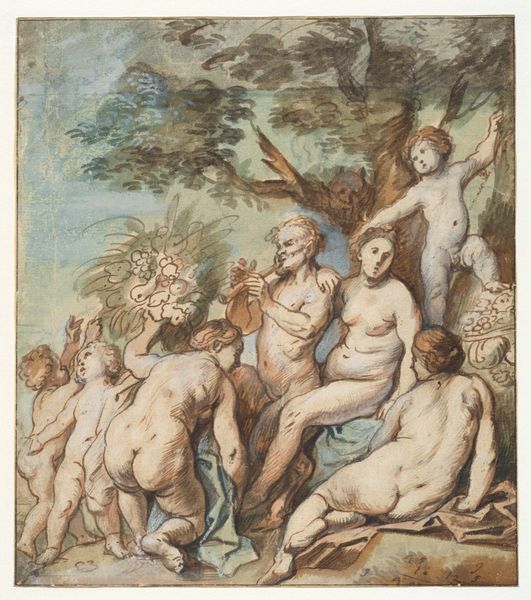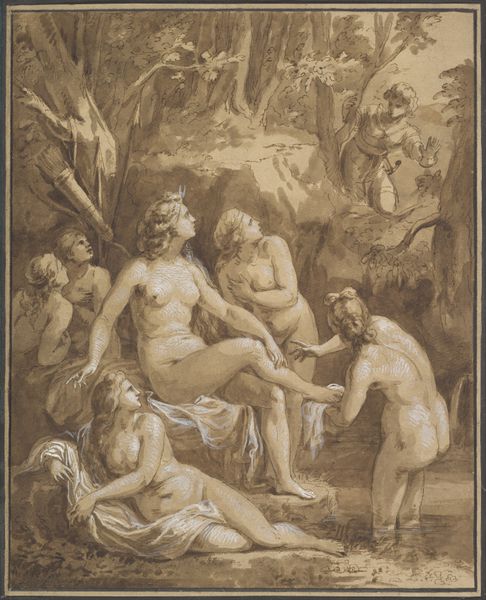
drawing, print, ink, pencil
#
drawing
#
allegory
#
baroque
# print
#
female-nude
#
ink
#
child
#
pencil
#
genre-painting
#
male-nude
#
watercolor
Dimensions: sheet: 14 15/16 x 9 3/4 in. (38 x 24.7 cm)
Copyright: Public Domain
Editor: We’re looking at Gerard de Lairesse's "Arcadian Scene with Bacchus," a drawing dating from sometime between 1641 and 1711. The soft lines and watercolor-like effect, even though it uses ink and pencil, give it a dreamlike, almost sentimental quality. It makes me think of idealized pastoral life. What do you see in this piece, especially considering its historical context? Curator: It's interesting that you mention the idealized pastoral life, because this drawing is very much embedded in the socio-political currents of its time. The presentation of Bacchus and Arcadian themes like carefree nymphs and putti reflects a longing for a golden age, often invoked by the ruling elites of the time. Who, after all, are commissioning and viewing pieces like this? Editor: Presumably, wealthy patrons who yearned for a sense of timeless elegance and justification for their own position? Curator: Precisely. The artwork also reinforces established norms. For example, consider the central placement and confident pose of Bacchus – does this placement implicitly legitimize established hierarchies? Moreover, it presents a very particular idea of pleasure and leisure, curated for an upper-class audience. Do you notice any contrast with art created for broader audiences? Editor: Yes, I see what you mean. Works intended for wider distribution are far more narrative and didactic and, frequently, overtly moralistic. They promote specific beliefs or proper behaviors. This drawing, in contrast, primarily seems interested in portraying a mythological fantasy. It makes me rethink what's "innocent" subject matter. Curator: Exactly! It underscores how art often operates within a complex web of power relations, reflecting and reinforcing the values of its patrons. And sometimes its subversive. Looking closely at the subject, patron, artist, and even the institution allows for a much fuller picture. Editor: I definitely see that. I had not considered it that way. Thanks for providing some context and explaining that point of view.
Comments
No comments
Be the first to comment and join the conversation on the ultimate creative platform.
